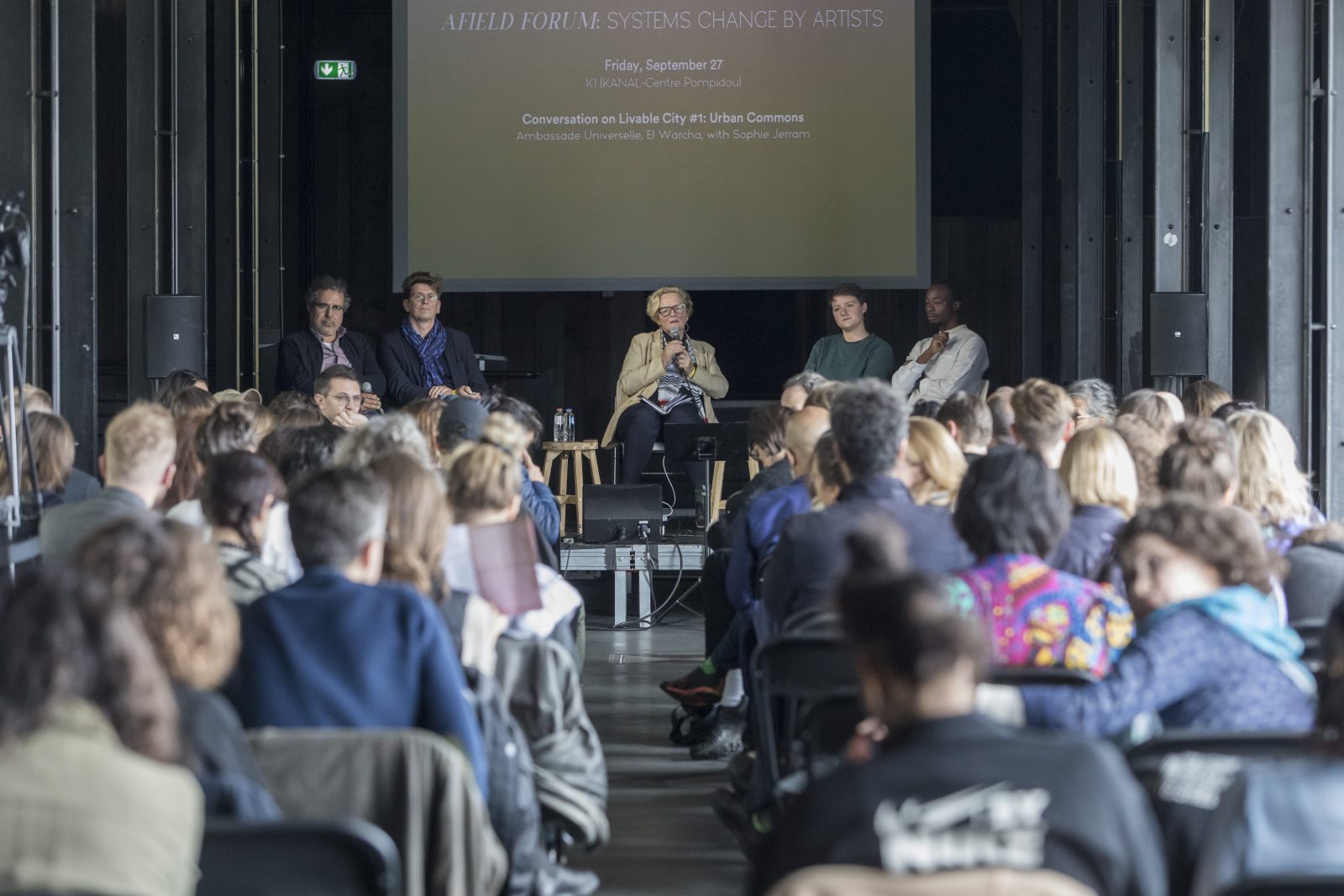
Conversation on Livable City #1: Urban Commons (Photo by Jan Locus)
On the first day of the conference, former Alliance digital editor Charlotte Kilpatrick attended a session entitles ‘Conversation on Livable City #1: Urban Commons’, the winner of our audience poll for this forum.
The session was with Ambassade Universelle and El Warcha, and moderated by Giuseppe Micciarelli.

Charlotte Kilpatrick, Alliance magazine
During my senior year of university in Washington DC the city piloted what seemed to me to be a rather strange experiment in art.
All around the city the mayor placed statues of donkeys (symbol of the Democrats) and elephants (Republicans), and then asked local artists to paint them in any way they saw fit. The statues were scattered at various intersections and on more than one occasion I overheard American tourists asking each other what was the point of having statues of political party symbols on street corners.
What was lost on many tourists was that art is never required to have a ‘point’ or any specific market value. In this case, the statues were meant as a playful distraction from the otherwise monotone concrete buildings lining the city’s major thoroughfares. So it was with the donkeys and elephants, and so it is with the speakers at AFIELD’s October conference on art and systems change.
Speaking on a panel about the Urban Commons, representatives of the El Wacha studio from Tunisia told conference-goers about their different collaborative projects around the city of Tunis. One short video showed young people from the medina working with power tools to help construct wooden structures that floated around the city. In another segment, children were seen practicing various circus acts such as juggling and balancing spinning wooden plates on thin metal rods. Putting it all together, the members of El Wacha succeeded in creating a floating circus where performers entertained audiences on the sea accompanied by spotlights and a marching band.

El Warcha, Benjamin, Aziz Perrot & Aissaoui
The second group of speakers was from the now-disbanded Ambassade Universelle in Brussels. In 2001 a group of undocumented migrants began squatting at the abandoned Somali embassy in the city centre. The building quickly became home to those who had been abandoned by the local authorities, the central government, and their countries of origin. In the words of the original founders, “it has become the embassy of those who no longer have an embassy.”

Ambassade Universelle
Over the years the Embassy Universelle became a central point of contact for those arriving in Belgium without housing, work, or the legal know-how to apply for asylum. Activists and lawyers helped the migrants gain access to local resources and fight the legal system to get recognised immigration status. “The arbitrariness and the lack of an overall vision constantly contribute to the isolation of migrants” reads an original statement about the embassy, “to the development of rumours, to the reproduction of acts of subjugation to procedures with no future.” The embassy eventually disbanded when the Somali government requested the construction back from the city of Brussels but the spirit of fighting for the undocumented has remained behind.
For some like the American tourists who I overheard complaining about the randomness of the donkey and elephant statues, art can only be measured by its market value. What this ignores is that cities without any source of artistic expression are not homes, but soulless shelters for spending the night and conducting commerce. Art makes these spaces, whether it be by the seemingly random act of painting a statue in electric colours, or by creating a floating wooden circus for trapeze artists.





Comments (0)